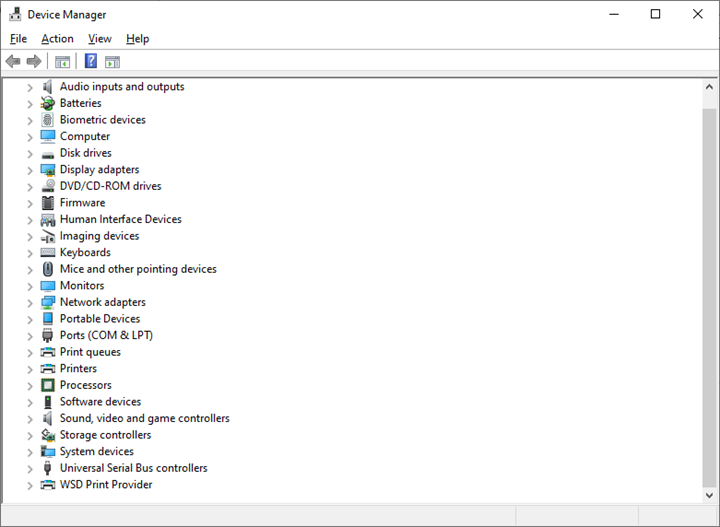Troubleshooting Audio or Sound Playback Issues
If you notice symptoms like no sound or audio, stuttering, jarring, crackling, or choppy audio, intermittent audio, distorted audio, follow the troubleshooting steps below.
- It is possible that the connection to your speakers is simply unplugged, has a loose connection, or has dust in it’s ports. Audio connections such as headphone jacks can build up dust over time and a compressed can of air can help clean any dust that could be preventing you from making an ideal connection between the speaker and the audio port on your PC.
- If this does not work and you can confirm that you have a solid connection between your audio device and your system, then try checking your sound settings, as sometimes third-party applications can change your audio settings without notice. In Windows 10 you can adjust your sound settings by right clicking on the start menu on the bottom left hand corner by default and selecting “Settings” then “Sound”. Here you will see a menu that looks like this:

- Make sure that your “Output device” is set to the audio speaker system that you wish to play sound from.
- If the above does not work, try rebooting your PC. As this will give the PC a chance to clear its memory (RAM) and ensure that any background process or services that could be interfering would be shut down. If the issue persists, then go ahead on to the next step.
- Windows 10 includes a handy troubleshooting tool that can be used to help resolve a problem You can access this by doing the following:
- Right-click on the start Windows start icon on the bottom left hand side of the screen and select “settings”.
- Navigate and click on “Troubleshoot”.
- Select “playing Audio” and click on “Run the troubleshooter”.
- Follow the on-screen instruction to complete the troubleshooting process.
- If the troubleshooter does not resolve the issue, move on to step 5.
- If the above does not work, uninstall and reinstall the audio drivers.
- Right click on the Windows start menu and click on “Device Manager”.
- Once done you should see a window like below:

- Click the arrow next to “Sound, Video and Games controllers” to expand the list and highlight your sound driver. You may see more the one sound driver, depending on the configuration you have. Right click on any of them and select “Properties.”
- Another Dialog box will appear with a several tabs. Click on “Driver” and then “Uninstall Device”. This will uninstall the sound driver.
- Once done, click “OK” and close the window.
- Now go to the windows Search bar on the bottom right hand corner and type in “Windows update” and click on the first result.
- Click on “Check for updates” As Windows will scan and check for driver updates and reinstall any drivers that are missing.
- If the above steps do not work, please contact our technical support team to assist further at 908-620-9050 or via email at support@maingear.com


